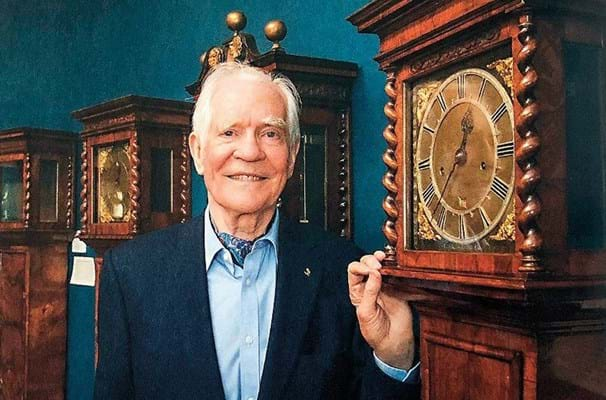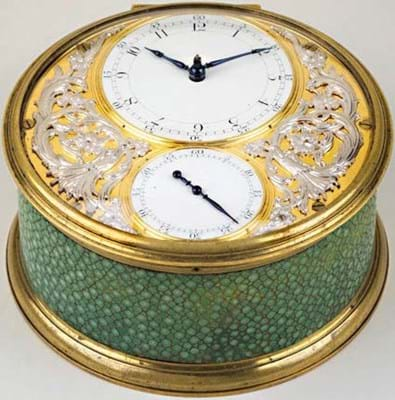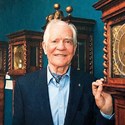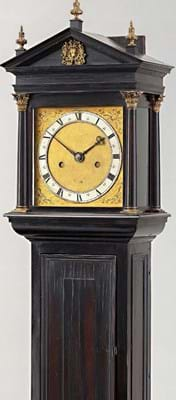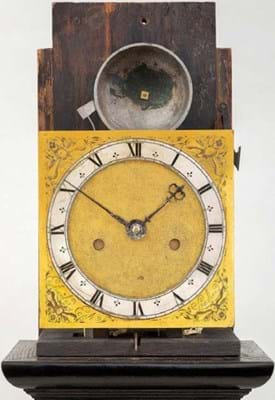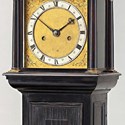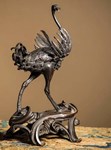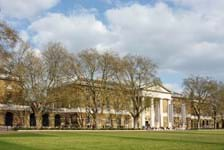The collection of Isle of Man entrepreneur and horologist Dr John C Taylor (b.1936) includes some of the best Golden Age and precision timekeepers that have come to market in the past 40 years.
Dr Taylor, the subject of a profile in ATG No 2232, is best known for inventing the bi-metallic thermostat used in every electric kettle. Beginning his collecting odyssey in the mid-1970s, he has – says Carter Marsh director Jonathan Carter – “chosen to oversee the release of his collection at the age of 85 as he is a very practical man”.
It is his desire to see the pieces dispersed in the market where they can be enjoyed by generations of collectors and enthusiasts rather than left en bloc to an institution.
Stellar material
The cache of stellar material is evidence that, with so many eyes turned to more fashionable disciplines, recent decades have been a mini-golden age for committed horology collectors.
“In almost every single area he has the best of everything” says Carter. It also betrays Taylor’s appreciation of practical and inventive expertise – an era when the tumult of politics was mirrored by the white heat of scientific development.
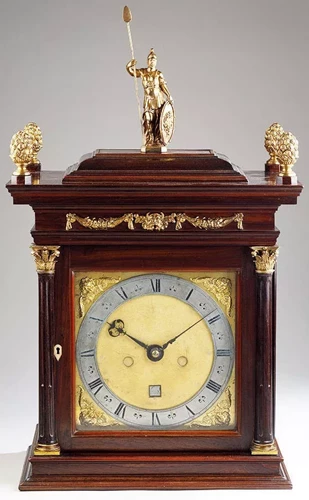
Among all the pioneering English clockmakers, Dr John C Taylor admires Ahasuerus Fromanteel in particular. This relatively recent discovery, at c.1665 a candidate for the first-ever true bracket clock, was found in a riad in Marrakech. Signed to the backplate Johannes Fromanteel Londini Fecit, the case, to a design attributed to John Webb (1611-72), is made of Brazilian rosewood. Sold to Taylor by dealership Bobinet in 2013 for £450,000, it is reoffered by Carter Marsh with a price tag of £375,000.
“His mind doesn’t necessarily work in the same way as other collectors. He approaches the subject through the mind of the clockmakers themselves,” says Carter.
“His great passion is very much still there and in our many conversations during cataloguing the reasons why he bought the pieces come to the fore.”
The dispersal of more than 150 clocks, watches and instruments will be conducted via a number of catalogued selling exhibitions.
The dealership used a similar model when offering the £15m collection of the Channel Islands businessman Tom Scott (1944-2012) – frequently Dr Taylor’s rival in the market – in 2015, beating Christie’s to the deal.
Of the 110 items in the Scott collection, 96 were sold including the Medici Tompion priced in the region of £4.5m
Under control
“The selling exhibition, a process that in this case may take two years, offers a more controlled approach, one that allows us to feel our way in the market,” says Carter.
Put on ice because of Covid, the first Taylor catalogue of 46 pieces will be offered in Winchester (July 3-24) following a London highlights exhibition at the Bruton Street galleries of English furniture dealer Ronald Phillips from June 23-30.

Priced at £120,000 is the Calcutta Earnshaw c.1792, an observatory regulator made by Thomas Earnshaw to a pattern first used by the Astronomer Royal Nevil Maskelyne for the observatory at Armagh. Maskelyne had suggested that the case for the regulator (which survives in situ) should be as close fitting as possible and Earnshaw promised it would be almost airtight, sealed from outside disturbance by a series of brass screws. The Taylor clock, so-called because it was found in Calcutta in 1999, is the only other Earnshaw regulator of similar specification. It was possibly acquired secondhand in the early 19th century by the East India Company, for one of its Indian observatories. It was last sold by Bobinet in 2006 for £100,000.
Jonathan Carter, who had intended to showcase the collection at the Masterpiece fair, is hopeful all restrictions will be lifted by that time (in line with the government roadmap) but is confident of progress even if some social-distancing measures are required.
Prices will range from £3000 to £3.5m. At the top end of the scale is the Spanish Tompion, a remarkable turtleshell and gilt brass grande sonnerie striking bracket clock commissioned c.1703 for presentation by Queen Anne to Archduke Charles von Habsburg.
One of only 13 full grande sonnerie clocks made by Thomas Tompion across his career, it was bought for $2.1m at Sotheby’s Masterpieces from the Time Museum sale in 1999. Taylor also owns two other Tompion clocks from the full grande sonnerie series, which will be offered in future catalogues.
The opening tranche of the collection – offering pieces across a range of horological subsets from lantern clocks to sea-going chronometers – will include one of two shagreen-cased marine timekeepers dated 1777 made by Thomas Mudge as he pitched for the Longitude Prize (pictured above).
Mudge Blue is now in the Mathematisch-Physikalisher Museum in Dresden. Mudge Green, bought by Dr Taylor at Sotheby’s in 2004 for $1.24m, is priced at £1.2m.
Open market
When possible in the cataloguing, Carter Marsh has chosen to include the prices paid by their client either at auction or through the trade.
“We would rather be open about it,” says Carter. “Sometimes things in our world are a little too enclosed. And with Sotheby’s and Christie’s no longer holding regular dedicated clock auctions, there’s no doubt we have lost a little of the open market.”
Some choice Taylor items formed part of the travelling exhibition Innovation and Collaboration, first held at Bonhams in September 2018.
However, it is probable that one of his most treasured possessions, a John Harrison longcase, will be among the small number of pieces he plans to keep.


